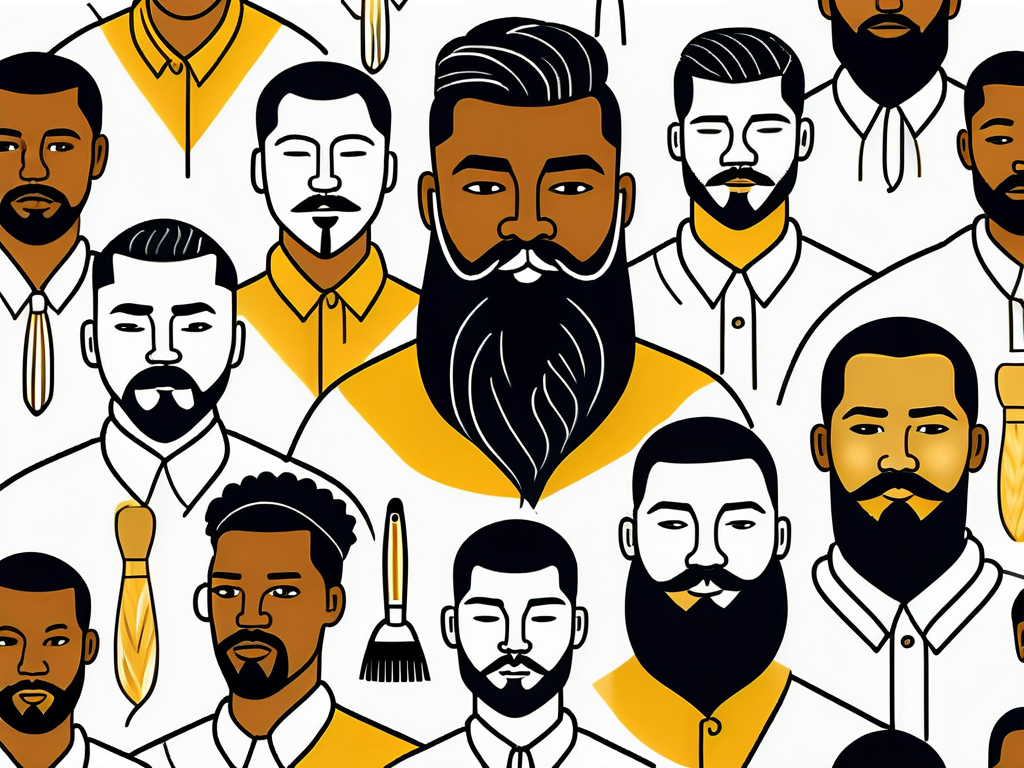What Ethnicity Can't Grow Facial Hair?
What Ethnicity Can't Grow Facial Hair?
Did you know that some ethnicities are more prone to growing facial hair than others? It's true! From luscious beards to well-groomed mustaches, facial hair has long been associated with masculinity and style.
So, if you're wondering if your ethnicity can't grow facial hair, or you're just hear to read about fascinating patters of facial hair growth across the world, stay tuned and learn about:
- Ethnicities and facial hair patterns
- Common misconceptions about facial hair growth
- The impact of testosterone on facial hair growth
Ethnicities and Facial Hair Patterns
There is no specific ethnicity that can't grow facial hair, but East Asian individuals, such as Japanese and Chinese, tend to have less facial hair and slower growth rates compared to other ethnicities.
Let's take a closer look at the fascinating differences across various ethnic groups.

Exploring the world of facial hair reveals a rich tapestry of diversity and cultural significance. From the rugged beards of Viking heritage to the meticulously groomed mustaches of Indian nobility, facial hair has long been intertwined with identity and tradition.
Facial Hair Trends in Different Ethnicities
Across the globe, different ethnicities exhibit distinct facial hair patterns.
For example, individuals of Mediterranean descent, such as Greeks and Italians, often sport thick and luxurious facial hair. To keep their full beards looking healthy and well-groomed, many rely on premium beard oils to hydrate and nourish their beard hair.
In contrast, East Asian populations, like the Japanese and Chinese, tend to have less facial hair and slower growth rates. However, for those looking to enhance and style their facial hair, using a beard straightener can help create a neat and polished look even with shorter or finer hair.
Delving deeper into the nuances of facial hair, one can observe how societal norms and historical influences have shaped grooming practices within each ethnicity.
The intricate designs of Native American facial hair or the symbolic meanings behind African tribal beard styles all contribute to the rich tapestry of global facial hair diversity.
The Role of Ethnicity in Hair Growth
While ethnicity does play a role, many other factors influence facial hair growth, such as:
🟢 Lifestyle choices
🟢 Hormonal levels
🟢 Overall health
💡 Boost Your Growth: Using a high-quality beard oil with natural ingredients can hydrate, nourish, and strengthen your beard, helping maximize its potential.
Additionally, grooming innovations have revolutionized beard care across cultures. From herb-infused beard oils to specialized straighteners for different hair textures, modern tools enhance traditional beard grooming.
Common Misconceptions About Facial Hair Growth
When it comes to facial hair growth, numerous myths and misconceptions abound. Let's debunk these common misconceptions and separate fact from fiction.
Debunking Myths About Facial Hair and Ethnicity
🚫 Myth 1: Only certain ethnicities can grow facial hair.
✅ Truth: Beard growth varies among individuals, but all ethnicities have the potential for facial hair.
🚫 Myth 2: Shaving makes facial hair grow thicker and faster.
✅ Truth: Shaving does not affect hair growth rate or thickness. Hair might feel coarser due to blunt ends, but this is just an illusion.
📌 Want to Maintain a Sharp Look? A beard straightener can help keep your beard polished and well-groomed, no matter your growth rate.
Additionally, factors such as age, hormonal levels, and overall health play significant roles in determining the growth rate and thickness of facial hair. It's essential to consider these aspects when evaluating the growth of your beard or mustache.
The Truth About Hair Growth Products
Many beard growth products claim to deliver miraculous results, but do they work?
🔹 Some nutrient-rich beard oils and serums can improve the appearance of your beard by nourishing hair follicles.
🔹 However, lifestyle factors like diet, hydration, and stress levels play a far greater role in actual beard growth.
💡 Enhance Your Beard Routine: Consider a beard growth kit that includes essential oils, vitamins, and grooming tools.
📌 Want More Tips? Check out What Vitamins Help Beard Growth for science-backed advice.
The Impact of Testosterone on Facial Hair Growth
Testosterone is the primary hormone responsible for facial hair growth, but it's not the only one.
- Dihydrotestosterone (DHT), a byproduct of testosterone, helps turn thin vellus hair into thicker terminal beard hair.
- Genetics determine how sensitive your hair follicles are to these hormones.
💡 Want to Maximize Beard Growth? Pairing a beard roller with beard oil may help stimulate follicles for better growth.

Facial hair growth is not solely determined by testosterone levels; other hormones, such asdihydrotestosterone (DHT), also play a significant role. DHT, a byproduct of testosterone, is more potent and contributes to the transformation of vellus (fine, light-colored) hair into terminal (thicker, darker) hair on the face.
Hormonal Influences on Hair Growth
Testosterone is responsible for triggering the growth of facial hair during puberty. It stimulates the hair follicles, initiating the development of beard and mustache hair. However, genetics, individual hormone levels, and other factors play a role in determining the extent and thickness of that growth.
Furthermore, the sensitivity of hair follicles to androgens like testosterone and DHT can vary among individuals. Some people may have more androgen receptors in hair follicles, leading to denser facial hair growth, while others may have fewer receptors, resulting in sparser growth.
Ethnicity and Hormone Levels
While testosterone levels vary among individuals, there is no evidence to suggest that specific ethnicities inherently possess lower testosterone levels.
Hormone levels can be influenced by various factors, including:
- Lifestyle choices
- Stress levels
- Underlying medical conditions
Therefore, it's crucial to avoid making sweeping generalizations about ethnic groups and their hormone levels.
Studies have shown that individuals of different ethnic backgrounds may exhibit varying patterns of facial hair growth.
For example, individuals of East Asian descent tend to have less facial hair compared to individuals of South Asian or Middle Eastern descent. These differences are not solely attributed to testosterone levels but also involve genetic factors that influence hair follicle sensitivity and distribution.
Embrace the Complexities of Facial Hair Growth and Pave the Way to a Full Beard
In conclusion, facial hair growth is a complex process influenced by a variety of factors, including genetics, hormones, and ethnicity. Therefore, a lot of different things affect facial hair growth patterns, and ethnicity doesn't play an enormous part.
If you want to enhance your grooming routine and make your beard grow, be patient, and meticulous, and get the best tools for this journey at The Beard Struggle.

